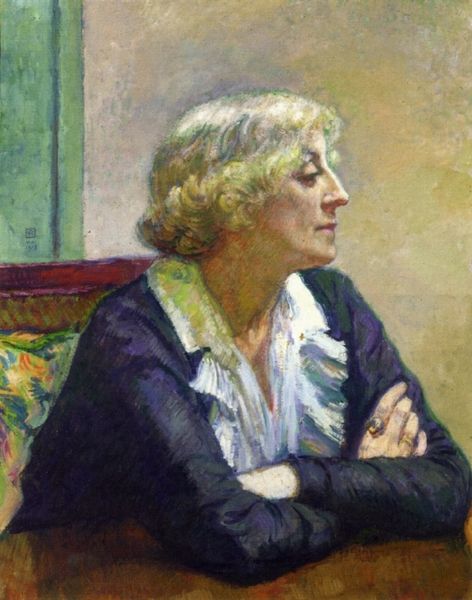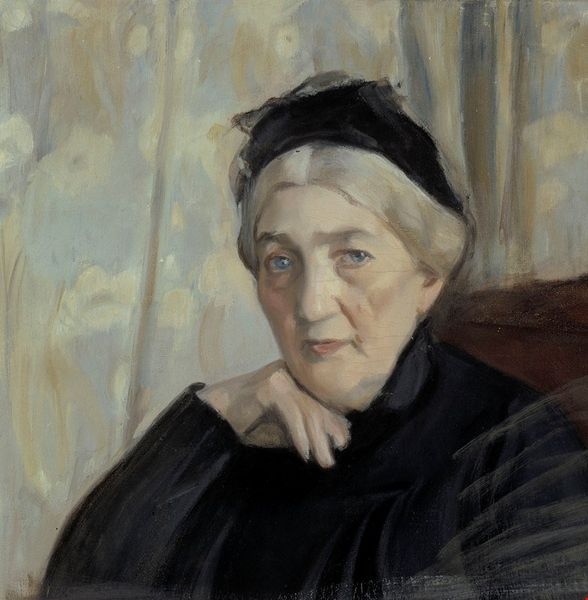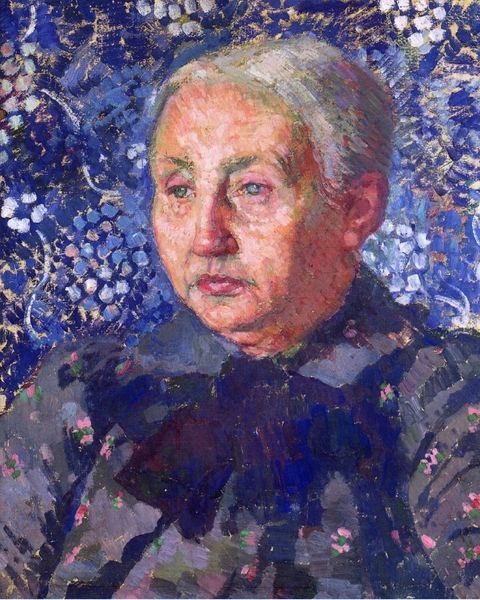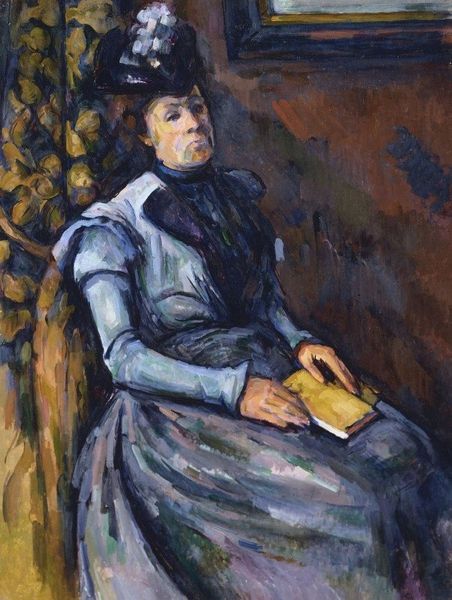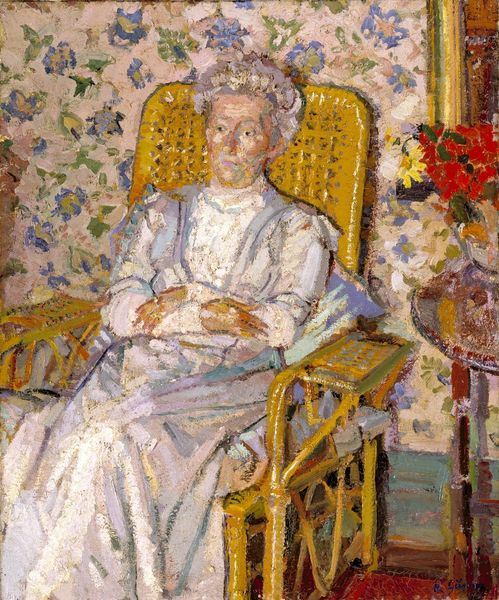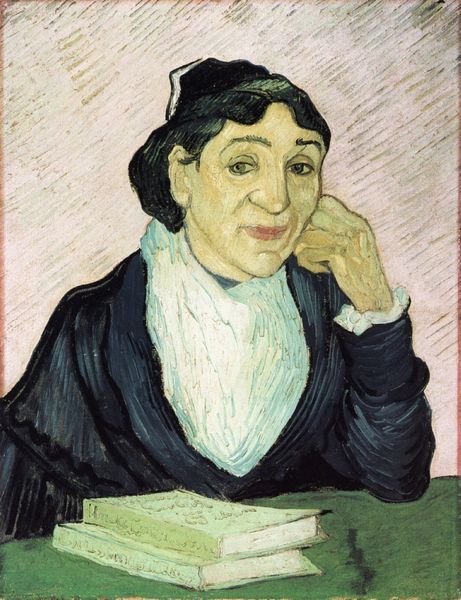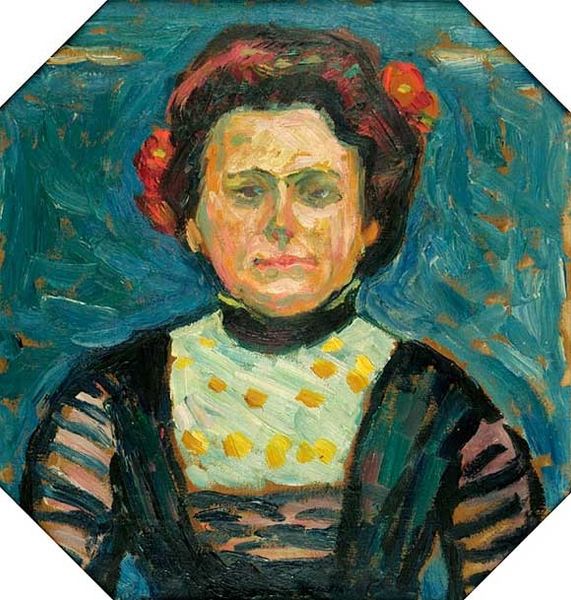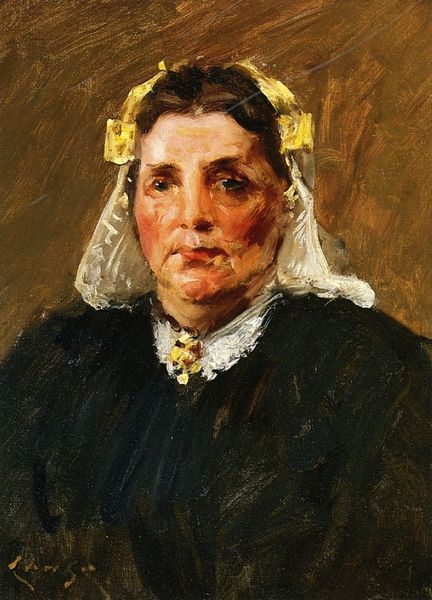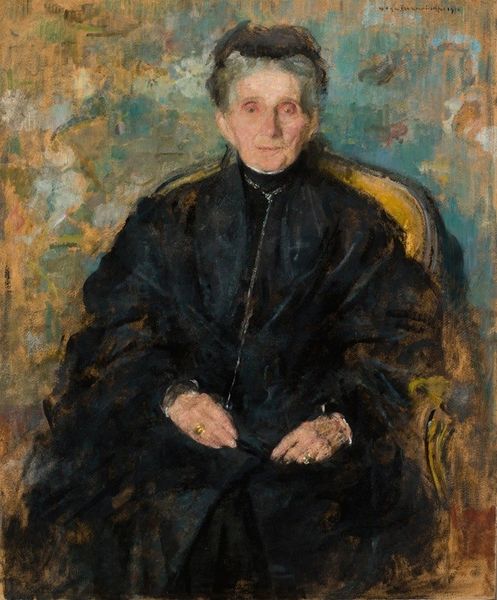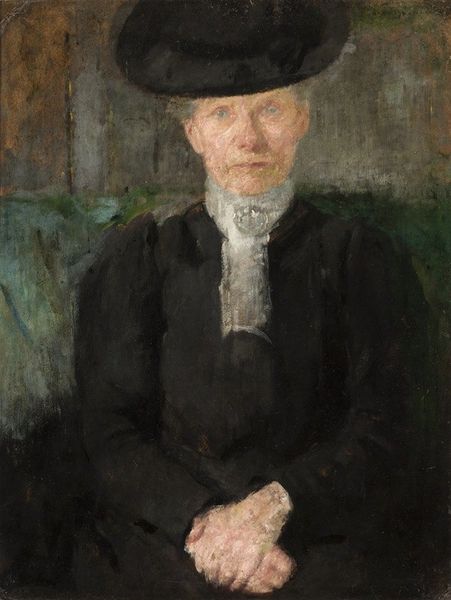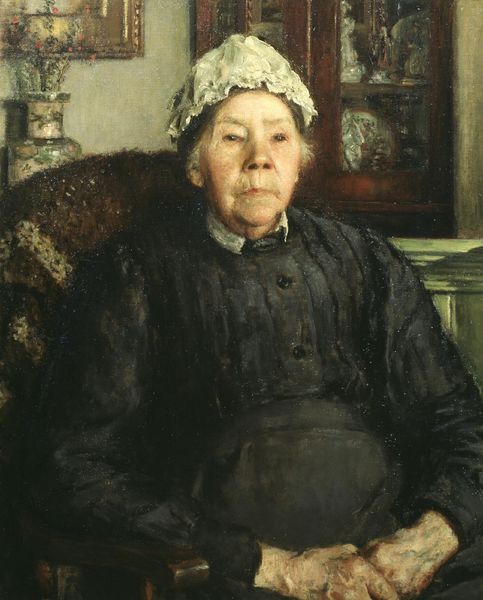
Dimensions: 33 x 25.4 cm
Copyright: Public domain
Editor: This is Theo van Rysselberghe’s “Portrait of Madame Monnon,” painted in 1908. The texture created by the oil paint is really what grabs my attention initially. How do you approach a piece like this? Curator: What immediately strikes me is the process evident in the painting’s surface. Look at the visible brushstrokes. Each one is a unit of labor, meticulously applied. Consider also what it meant to create a portrait at the time, versus the increasing affordability and availability of photographic portraiture to wider members of society, did that change in any way the type of art and material made available for bourgeois society? Editor: That’s a really interesting point, because it seems like painting would suddenly be free to move in completely new directions, which is also reflected in these very apparent strokes that maybe would have previously been smoothed over. Curator: Precisely. And those directions have socio-economic ramifications. What sort of conversations were held and materials acquired when producing these brushstrokes, what would Madame Monnon make of the finished article, would they have similar views on material culture and value. Do you get any sense of social intimacy from these strokes, which after all are made up from a combination of many resources to procure oil-based paints at that time in 1908? Editor: Now that you point out all the effort that went into this material object, this does make me appreciate all the resources behind that production even more! Curator: Exactly. By focusing on the material, we are not so easily drawn to a biographical interpretation and other personal details from Monnon's world. Editor: Thanks, I now see this portrait reflecting a larger cultural landscape that foregrounds process and materiality! Curator: It’s all about expanding how we see what is really in front of us, material evidence.
Comments
No comments
Be the first to comment and join the conversation on the ultimate creative platform.

